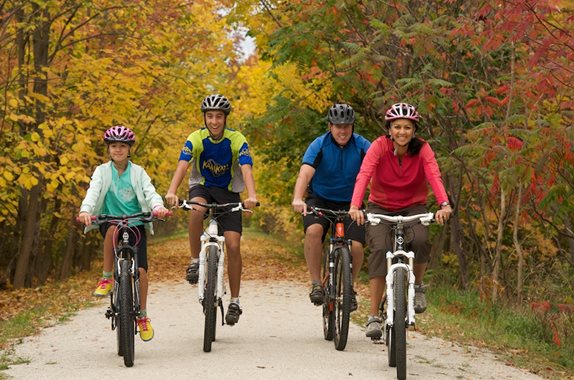Itineraries are some of the simplest and most effective ways to market some of the great things for visitors to see and do while in the region. Here are five easy steps to build a great itinerary.
-
The Basics
There are some questions that you will need to answer when you begin:
-
Who is your target audience?
-
How long will the itinerary take? (3 hours, 1 day, 2-3 days)
-
What is one key thing (core trip motivator) that they should do?
-
Where are they going to go?
-
Why do they need to go NOW?
Your audience will dictate the length, type and intensity of your experience. For example, if you are targeting families with young children, activities should be shorter then they would be for an active couple in their late 20s. The “key thing” forms the backbone of your experience and all other activities should complement this. It could be anything from a hike along a trail or a day at a local festival. Finally, the itinerary should name starting and ending points. The starting point could be at a local B&B or resort while the ending point might include a great place to watch the sunset or enjoy a delicious dinner.
The answers to the questions above will also form the basis for your marketing plan.
-
Map It Out

If travelling from place to place be specific with the directions. Google Maps are terrific for this. The My Places function will let you mark each of the locations and create a route. In rural areas, Google Maps may have the pin in the wrong location. Click
here to learn how to fix this.
Here is a short
How to video to learn how to build a customized Google map:
https://www.youtube.com/watch?v=4Udygu3-Z_A
If you are giving a timeframe to complete things, leave lots of time. A general time frame for how long to spend at each place is better then a strict one, remember, people are on vacation and spending extra time can be a good thing!
-
Be Specific
Being as detailed as possible is helpful for people. Choose a specific spot they should stop to take a picture, which trail they should take and even as detailed as where to park. Pick specific businesses where people should stop AND name a great thing that they are know for. People need specifics to make them feel comfortable about doing this, even if they don’t follow the itinerary exactly.
Here are some starting points:
Stay at___(accommodation)______.
Head out __(activity)_____________ for the morning. (2-3 hrs)
Stop and take a picture at__(location)__.
Eat lunch at__(restaurant)_____. They are famous for their_____(menu Item)___.
Check out downtown___(town)______.
(store)_____ has the coolest _____(item)_______. These are great souvenirs to take home.
Finish your day off at _(restaurant)_____ for dinner. __(menu item)___is highly recommended.
Local insider’s tip:__(something you can’t normally find out)____.
Relating the itinerary back to something the locals do is a terrific way to create authenticity.
-
Add Stunning Visuals
Professional photography goes a long way and if you have some video, even better. People in your pictures are recommended.

-
Figure Out How To Track It
This can be the most difficult part of any marketing effort. However, it’s important to know if this is working and where improvements can be made. Social media can help with that. Develop a set of standard #hashtags and encourage people to tag you in social media posts of them on the itinerary. Be sure to post your twitter and instagram handles and facebook page somewhere visible as a gentle reminder. This is a great opportunity to ask them how they liked it as well.
Some other ways to track uptake of the itinerary could include:
-
Having the partner business ask visitors if they were on a particular itinerary
-
Including an exclusive coupon for certain business on the itinerary
-
Downloads on your website
Itineraries can be a great way to encourage people to stay longer and come back during the off-season! Partnership and collaboration are critical to making this happen. Tap into the resources available at your local DMO or
RTO7 to help you get this off the ground.
RTO7 is committed to helping stakeholders create new products and experiences for visitors to increase length of stay, tourism receipts and repeat trips. For more information on product and experience development, contact Kim Clarke, Tourism Experience Development Specialist at
kclarke@rto7.ca or 519-379-2506.
Next in the blog series: Creating self-guided tours for product development.